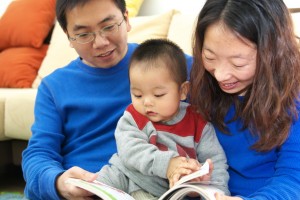After watching this fantastic video with tips to advance the language skills of young children (based on research), a teacher asked me “Isn’t this more a video more for parents? [Sic] What are the ramifications for modern language teachers?”
My response was, “substitute the word ‘parent’ by ‘modern language teacher,’” but that’s an easy answer. Let me elaborate a little more.
Foreign language teachers understand that helping our students reach high levels of proficiency is the ultimate goal in our profession. Obviously, bilingual parents share this goal as well (at least many).
But the question is, do world language teachers use proficiency-building strategies like the ones on the video on a consistent basis and from early childhood?
Or do they use activities mostly targeted to learning limited vocabulary and expressions?
Judging by the fact that most students in the US never pass the Novice High level and only some reach the Intermediate levels (even fewer get to Advanced) and seeing what I see around, I suspect that more needs to be done to advance the language skills of our students.
By the way, what does it mean to graduate with a Novice High level? It means that after years spent in foreign language classes the majority of US students out there can’t communicate much further than a simple “Hi, my name is… What is your name?” and highly scripted exchanges of the sort. The moment a native speaker starts talking to them in fluent conversation, they are completely lost.

So going back to the video, I believe that this video is specially well-suited for foreign or modern language teachers because it points very clearly to the things that are missing in today’s foreign language classrooms and it provides great examples of how to tackle the problem in early childhood.
It’s not just a video for bilingual (or monolingual) parents!
Let’s review what the video says:
“A child isn’t born with a language ready to go.” It is all about the early experiences.
“The role of experience in shaping the brain systems [that are] important for language starts very early.” Actually, it starts from the womb.
Young children do not zero in to recordings, DVDs, etc. Social interaction is critical.
“The changes in the brain do not happen automatically when they reach a certain age. They only happen when children actually learn more words and more complex sentences.”
So what the researcher in the video highlights is the importance of “the right kind of experiences.”
***These experiences are indeed so critical in the case of language development that, as expressed in the last bullet point, the changes in the brain will not happen just because a child reaches a certain age. They will only happen if he or she receives the right type of language stimulus.***
Are we providing the “right kind of experiences” that will lead to a change in the brain and high levels of language proficiency in the target language in the current early language classrooms?
Those of you who believe with me that we are not quite there yet, may want to reexamine the video and self-apply some of the great advice there.
We, teachers of young children, together with the bilingual (or monolingual) parents shown in the video can help by:
- Talking a lot and using more complex language than our students are using.
- Taking turns in our conversations with them, not just doing all the talking.
- Providing full explanations to our students’ questions and asking questions to them as well.
- Reading to and sharing books with our students every day.
If we believe that we are incredibly fortunate to be working with children at the best time to learn languages (the “sensitive period” that the researcher mentions), then we have an equal responsibility to make sure that we provide the best possible language experiences for our students.
Let’s start the conversation, and let’s keep learning from bilingual parents (that is, let’s realize that the same advice geared to them applies to us, language teachers!).
Best,
Ana Lomba
******
Ana Lomba is changing the way people think about and interact with young children learning languages. Her Parents’ Choice award-winning books, lively songs, games, stories, and mobile applications are quickly becoming favorites with teachers and parents who want to nurture young children’ inborn language abilities. Key to the success of Ana’s break-through method is a focus on the family as the ideal environment for early language learning – even her signature curriculum for language programs is built with parents in mind. Ana has taught toddler, preschool, elementary school, and college-level Spanish courses, and held leadership positions with some of the most influential language organizations in the US, including ACTFL, NNELL and FLENJ. After graduating with a law degree from Spain, her native country, Ana pursued graduate studies at Binghamton University, Princeton University, and NYU.
Leave a Reply